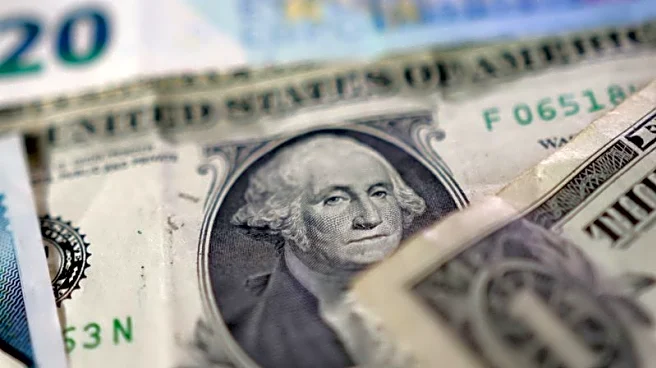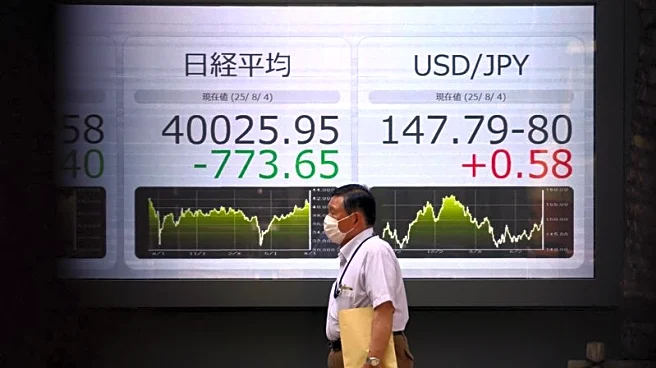What is the story about?
What's Happening?
Gold prices experienced a slight increase on Friday, supported by a weaker U.S. dollar, but are on track for a weekly decline. This trend follows the release of U.S. producer price data that exceeded expectations, reducing the likelihood of a significant interest rate cut by the Federal Reserve in September. Spot gold rose by 0.2% to $3,340.59 per ounce, while U.S. gold futures for December delivery increased by 0.1% to $3,387.50. The U.S. dollar index fell by 0.4%, making gold more affordable for holders of other currencies. The recent data showed a significant rise in U.S. producer prices, the largest in three years, indicating inflationary pressures. Additionally, weekly jobless claims were lower than anticipated, further influencing the Federal Reserve's decision-making process regarding interest rates.
Why It's Important?
The Federal Reserve's interest rate decisions are crucial for the U.S. economy, influencing borrowing costs, consumer spending, and investment. A smaller rate cut than anticipated could affect various sectors, including housing and consumer goods, by maintaining higher borrowing costs. For investors, gold is often seen as a hedge against inflation and economic uncertainty. The current situation, where gold prices are inversely related to the U.S. dollar, highlights the complex interplay between currency values, economic data, and investor sentiment. The potential for a less aggressive rate cut by the Federal Reserve may lead to adjustments in investment strategies, particularly for those relying on gold as a safe haven.
What's Next?
Investors and market analysts will closely monitor upcoming economic data releases and Federal Reserve communications for further insights into future monetary policy. The outcome of President Trump's meeting with Russian President Vladimir Putin in Alaska may also have geopolitical implications that could influence market dynamics. Additionally, any changes in U.S. economic indicators, such as consumer spending and employment figures, will be critical in shaping expectations for the Federal Reserve's next moves.
Beyond the Headlines
The broader implications of the Federal Reserve's interest rate decisions extend beyond immediate market reactions. Long-term economic growth, inflation control, and financial stability are all influenced by these policy choices. The current economic environment, characterized by inflationary pressures and geopolitical uncertainties, underscores the challenges faced by policymakers in balancing growth and stability. The evolving relationship between the U.S. dollar and gold prices also reflects broader trends in global finance and investor behavior.
AI Generated Content
Do you find this article useful?













